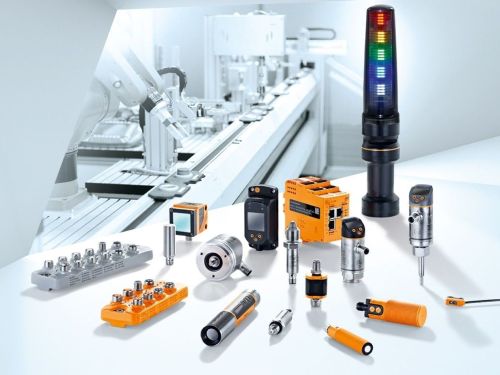Backflushing processes in a water treatment plant
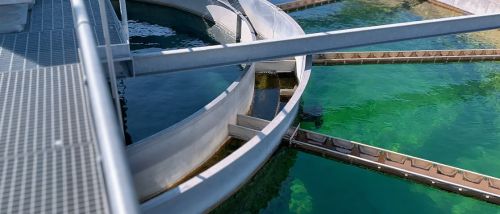
A clear view for clear water
To cover the supply of approximately 80,000 customers in an area of about 14,600 square kilometres reliably, the company treats raw water from the Murray River in nine plants to produce drinking water.
The untreated water passes through several stations as it is treated to become drinking water, including filtration. During this step in the process, tiny suspended particles that have not already been removed from the water by flocculation, precipitation and sedimentation are filtered out. Since the filters become increasingly blocked as particles settle on them, they must be cleaned regular by means of backflushing. This is the only way to retain functionality and the flow of water. "To do this, the filtration process is stopped, then water that has already been filtered is directed through the filter in the opposite direction at an increased flow rate to release trapped particles", explains Mark Blows, Team Leader, Electrical Maintenance at Lower Murray Water.
To ensure that the backflushing runs in a self-contained process and no dirty water gets into the drinkable water that has already been treated, it is important for the necessary valves to open and close reliably. "Until now we have ensured this by means of limit switches and that has allowed us to trace whether the valve is open or closed."
When a new backflushing system was installed in the water treatment plant in Mildura, Lower Murray Water decided to use the MVQ101 valve sensor from ifm instead of limit switches.
Recognising what happens in the valve
The Smart Valve Sensor MVQ101 is a position sensor for valve actuators that provides a transparent view of what happens in the valve. The MVQ not only transmits via IO-Link that the end positions have been reached. Thanks to continuous recording of the position, the user can also keep an eye on the current valve position, accurately reported in degrees, as well as opening and closing times.
For example, slower movement patterns point to accumulations in the valve or pipe. Blockages or adhering residue that prevent the flap from actually closing completely are detected by the sensor with a valve opening of as little as 0.1 degrees and a corresponding message is generated. The information is available via switching outputs and IO-Link and also on the device itself, thanks to a distinctive status LED with clear all-around visibility
"In systems conducting water, even a minimal valve gap that cannot be reliably recorded by conventional limit position switches can be enough to effectively eliminate the separation between drinking water and industrial water", says Mark Blows. "With the MVQ we can make certain before every flushing process that all the valves are actually closed and sealed. The additional diagnostic possibilities such as the actual movement time of the valve help us to maintain our systems based on actual need. This prevents unnecessary downtimes and the risk of endangering drinking water quality is also minimised."
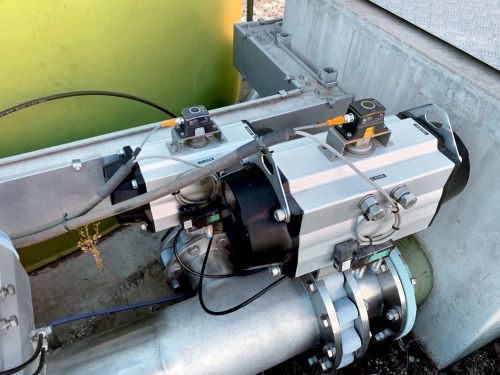
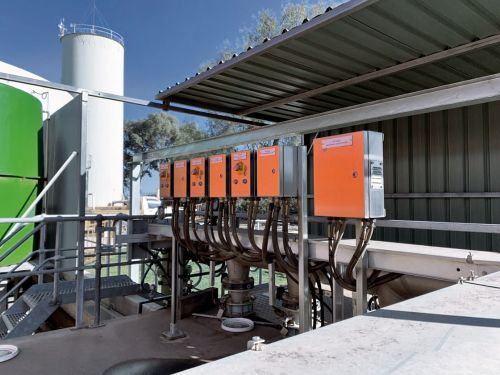
Picture 1: The MVQ101 ensures a reliable separation between drinking water and industrial water. The Sensor detects even the smallest opening of as little as 0.1 degree. Picture 2: Thanks to IO-Link, the installation and a replacement of an MVQ is really easy. Plus, the MVQ even resists the direct influence of the Australian climate.

Resilience proven under the Australian sun
Another advantage: The MVQ is low-maintenance – and extremely resilient. "Previously the feedback for the valve position was provided by sensors with mechanical switches. The many movable parts were a potential source of errors which could lead to a plant stoppage. With the MVQ, we are able to reduce the number of movable components and also work digitally, which significantly lowers the risk of a plant stoppage caused by an error."
It should also be mentioned that Lower Murray Water operates the Smart Valve Sensor outdoors, where it is largely unprotected from the Australian climate. "Dust and rain have had as little effect so far on the MVQs we installed as direct sunshine and temperatures between minus two and plus 45 degrees Celsius."
In addition to the information and process reliability gained, Lower Murray Water employees also appreciate the accelerated installation process. "Installing the sensors on the valve is really easy, as are commissioning and connecting to the controller thanks to IO-Link." Thanks to the IO-Link digital communication technology, up to eight MVQs can be connected to a single IO-Link master, which forwards the bundled data to the IT level as well as the controller.
When a replacement is made, the time for implementation is reduced thanks to the master connection, because the parameters are saved on the master and are automatically written to the new device after the sensor is replaced. For Lower Murray Water that means seamless and reliable monitoring of the backflushing process is guaranteed at all times.
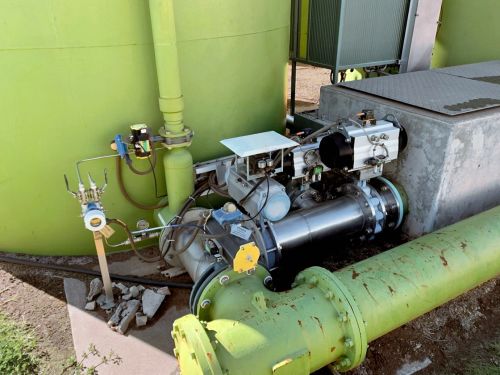
Conclusion
Now that the MVQ101 is installed, Lower Murray Water has a continuous and transparent view of the condition of the valves in the backflushing system of the water treatment plant in Mildura. The digital transmission of the valve position, opening and closing time via IO-Link as well as digital and visual alarms on site in the event of blockages ensures drinking water quality and gives the company the ability to recognize the need for maintenance early on and to carry out maintenance measures.
